Published: 20.07.23
Updated: 20.05.25
A go-kart is a small, lightweight vehicle used primarily for racing, but also popular among hobbyists and thrill-seekers. 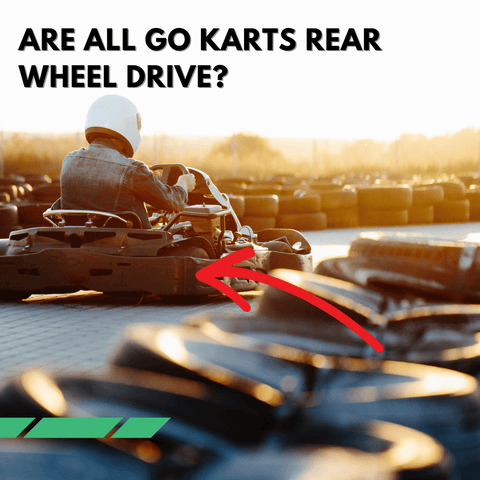
Go-karts are designed for optimal handling and speed, with different drivetrain configurations—rear-wheel drive (RWD), front-wheel drive (FWD), and all-wheel drive (AWD)—affecting the driving experience.
Understanding these differences, including differentials and wheel setups, helps racers and enthusiasts choose the right kart for their needs.
1. Are All Go-Karts Rear-Wheel Drive?
Most go-karts are rear-wheel drive (RWD) due to their efficient handling, but not all. RWD karts lack a differential, allowing the outside rear tire to rotate faster during turns, improving cornering without drifting. Front-wheel drive (FWD) and all-wheel drive (AWD) karts, including 4WD or 4x4 go-karts, exist but are less common, often used for off-road or specialty purposes.
2. Types of Go-Karts and Drivetrains
Go-karts vary in construction, drivetrain, and wheel setups. Here’s a comparison of the main types:
| Type | Power Distribution | Characteristics | Usage |
|---|---|---|---|
| Rear-Wheel Drive | Power to rear wheels | Excellent handling, no differential | Racing, performance karts |
| Front-Wheel Drive | Power to front wheels | Understeer, front-engine | Rare, specialty racing karts |
| All-Wheel Drive (4WD/4x4) | Power to all wheels | Heavier, better for rough terrain | Off-road, utility karts |
3. Do Go-Karts Have Differentials?
Most go-karts, especially RWD models, do not have differentials. Instead, they rely on the ‘lifting’ phenomenon, where the inside rear wheel lifts during turns, allowing the outside wheel to rotate faster. This simplifies the drivetrain and enhances cornering. Some AWD or FWD karts may use differentials or CV joints for power distribution, but these are rare and add complexity.
4. Go-Kart Wheels and Drive Systems
Go-kart wheels and drive systems significantly impact performance. Rear wheels in RWD karts are typically wider for better traction, while front wheels are narrower for steering precision. AWD karts use all four wheels for power, ideal for 4x4 off-road models. Single-wheel drive or two-wheel drive setups exist in some karts, affecting handling and stability.
5. Detailed Comparison of Drivetrains
Rear-Wheel Drive (RWD) Go-Karts
RWD karts, the most common, have rear-mounted engines powering the rear wheels, offering superior handling and no differential.
Front-Wheel Drive (FWD) Go-Karts
FWD karts, often front-engine, power the front wheels, leading to understeer and are rare in racing.
All-Wheel Drive (AWD/4WD) Go-Karts
AWD or 4x4 karts distribute power to all wheels, excelling in off-road conditions but heavier and less agile.
6. Technical Specifications
Rear-Wheel Drive Go-Karts
- Engine: Single-cylinder, two- or four-stroke gasoline or electric
- Transmission: Direct drive or centrifugal clutch
- Drivetrain: Solid rear axle, no differential
Front-Wheel Drive Go-Karts
- Engine: Single-cylinder, two- or four-stroke gasoline, front-mounted
- Transmission: Direct drive or centrifugal clutch
Drivetrain:
- Front-wheel drive with differential or CV joints
All-Wheel Drive Go-Karts
- Engine: Single-cylinder, two- or four-stroke gasoline
- Transmission: Direct drive or centrifugal clutch
- Drivetrain: Complex system with differentials or viscous couplings
7. Performance Comparison
Acceleration and Top Speed
- RWD: Excellent acceleration and speed due to optimal weight distribution.
- FWD: Moderate acceleration, with potential understeer.
- AWD: Strong acceleration but heavier, reducing top speed.
Cornering and Handling
- RWD: Superb cornering due to no differential, enabling faster outside tire rotation.
- FWD: Understeer reduces cornering performance.
- AWD: Better grip but heavier, impacting agility.
8. Pros and Cons
Rear-Wheel Drive Go-Karts
Pros:
- Excellent handling and low center of gravity
- Simple, cost-effective design
- Efficient cornering
Cons:
- Possible oversteer in low-grip conditions
Front-Wheel Drive Go-Karts
Pros:
- Better traction in low-grip conditions
- Simpler drivetrain routing
Cons:
- Understeer and reduced cornering
- Less rear traction
All-Wheel Drive Go-Karts
Pros:
- Enhanced traction and stability
- Better for off-road use
Cons:
- Heavier and more complex
- Higher costs
Explore more: The History of Go-Karts
9. Driving Experience
Rear-Wheel Drive Go-Karts
RWD karts offer an exhilarating experience, with power to the rear wheels providing thrilling cornering and balance.
Front-Wheel Drive Go-Karts
FWD karts require unique handling skills due to understeer, offering a distinct driving challenge.
All-Wheel Drive Go-Karts
AWD karts are heavier but excel on rough terrain, ideal for 4x4 off-road adventures.
Learn more: 10 Facts About Go-Karts
10. Why Rear-Wheel Drive Dominates
RWD is standard in go-karts due to its handling advantages in racing, enhanced by the absence of a differential and optimal weight distribution.
Role of Differentials
Go-karts typically lack differentials, relying on the ‘lifting’ phenomenon, where the inside rear tire lifts during turns, allowing smoother cornering.
Weight and Balance
A low center of gravity, achieved by rear-mounted engines, improves control and handling.
11. Exceptions: FWD and AWD Go-Karts
Front-Wheel Drive Go-Karts
FWD karts, often with front engines, are uncommon due to understeer but used in some specialty designs.
All-Wheel Drive Go-Karts
AWD or 4x4 karts are rare, designed for off-road utility with complex drivetrains for enhanced traction.
12. Drift Karts
Drift karts, designed for controlled sliding, rely on RWD for their ability to lose rear traction while maintaining front grip.
Discover more: What Are Drift Karts?
Related: Do Go-Karts Have Traction Control?
13. Transmission Systems
Go-kart performance depends on transmission systems. Mastering go-kart transmissions ensures smooth power transfer, critical for RWD, FWD, or AWD setups.
14. The Future of Go-Karts
The go-kart industry is evolving with new technologies shaping its future.
Electric Go-Karts
Electric go-karts, like those from Greenworks and Honda, offer zero emissions, high torque, and lower maintenance, driven by advanced lithium-ion batteries.
SPEED+ Technology
360 Karting’s SPEED+ technology enhances track design with banked turns and optimised inclinations for safer, more enjoyable racing.
Advanced Materials
Carbon fiber and aerodynamic designs improve chassis rigidity, acceleration, and safety.
Virtual and Augmented Reality
VR/AR technologies create immersive racing simulations and real-time feedback, enhancing the experience.
15. How to Drive a Go-Kart
Driving a go-kart requires mastering throttle control, braking, and cornering. For RWD karts, balance power to avoid oversteer; for FWD, manage understeer; and for AWD, leverage traction on rough terrain. Practice smooth steering and learn the track’s racing line for optimal performance.
Conclusion
While most go-karts are rear-wheel drive for their performance and simplicity, FWD and AWD (4WD/4x4) options cater to specific uses like off-road adventures. The RWD design, with no differential and a low center of gravity, offers unmatched handling, making it the preferred choice for racers.
Frequently Asked Questions
Are go-karts rear-wheel drive?
Most go-karts are rear-wheel drive (RWD) for superior handling and simplicity, though front-wheel drive (FWD) and all-wheel drive (AWD) models exist.
Do go-karts have differentials?
Most RWD go-karts lack differentials, using the ‘lifting’ phenomenon for smooth cornering. Some AWD or FWD karts may include differentials.
What are 4WD or 4x4 go-karts?
4WD or 4x4 go-karts are all-wheel drive models designed for off-road use, offering enhanced traction but heavier and more complex than RWD karts.
How do go-kart wheels affect performance?
Rear wheels in RWD karts are wider for traction, front wheels are narrower for steering, and AWD karts use all wheels for power, impacting handling and stability.
How can I choose the right go-kart drivetrain?
Choose RWD for racing, AWD for off-road, or electric karts for eco-friendly options, based on your purpose, budget, and terrain.
Get in Touch
Now you’re well-versed in go-kart drivetrains! Have questions about kids’ ride-on toys or go-karts? Visit RiiRoo.com or contact us via Live Chat. Never too old for fun—reach out!


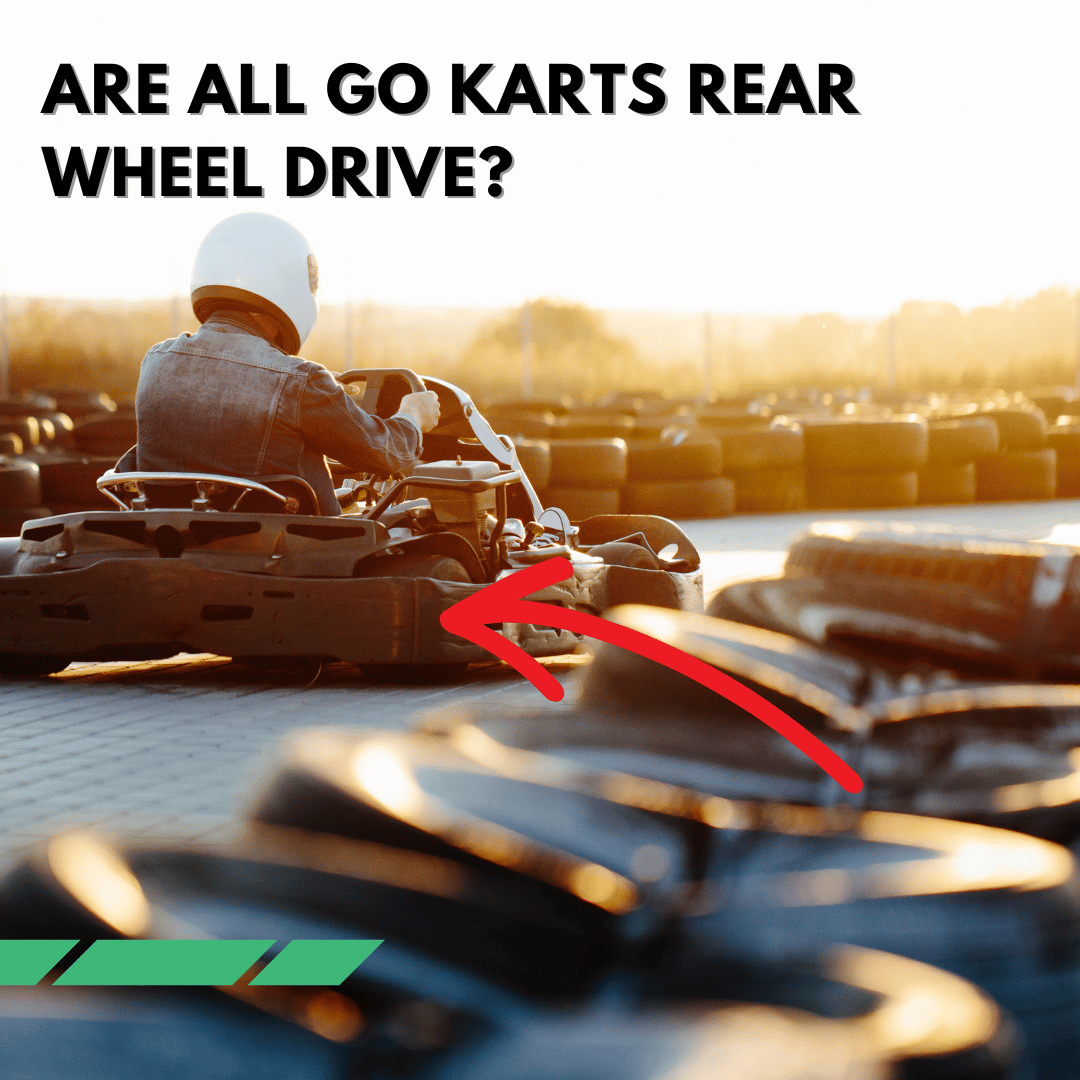
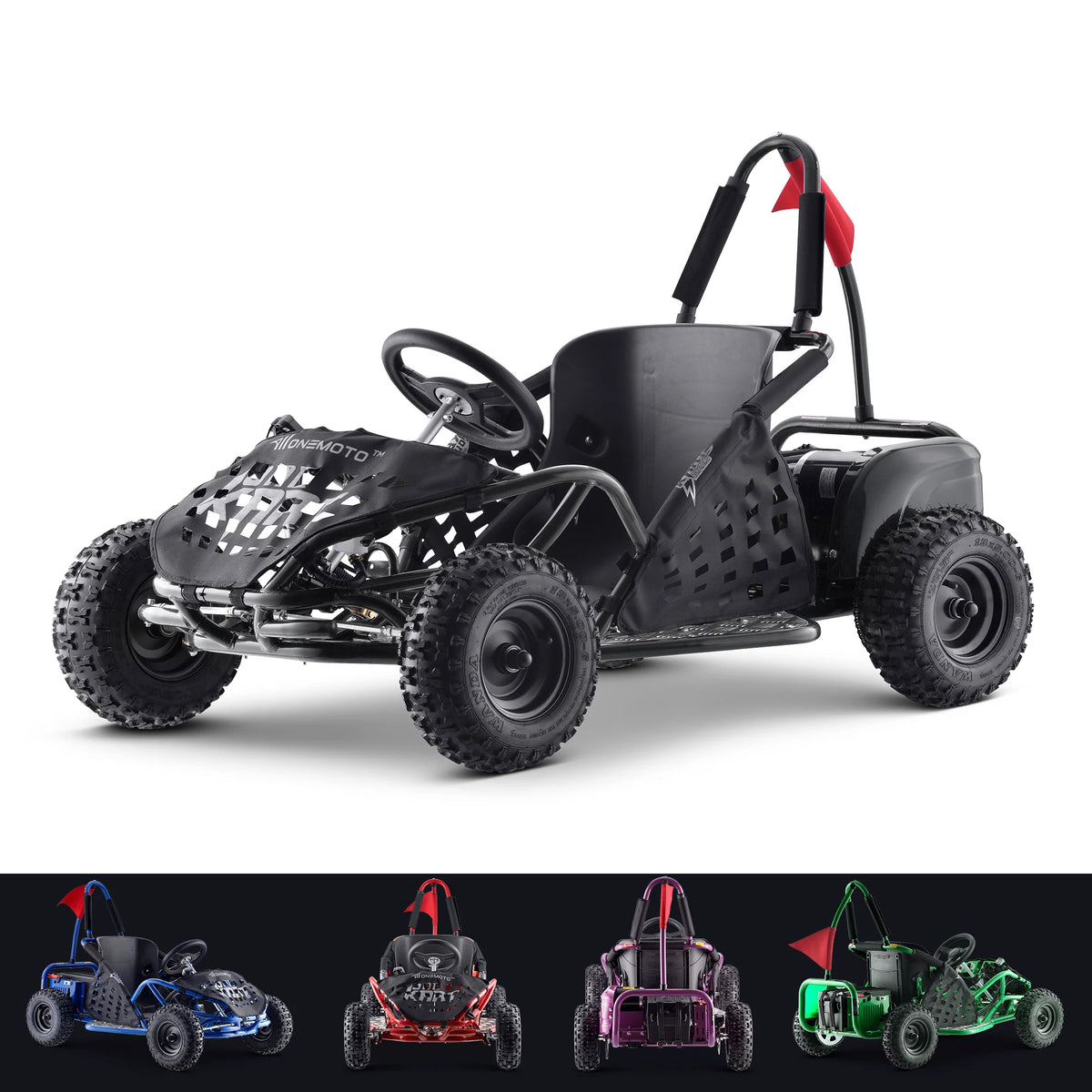
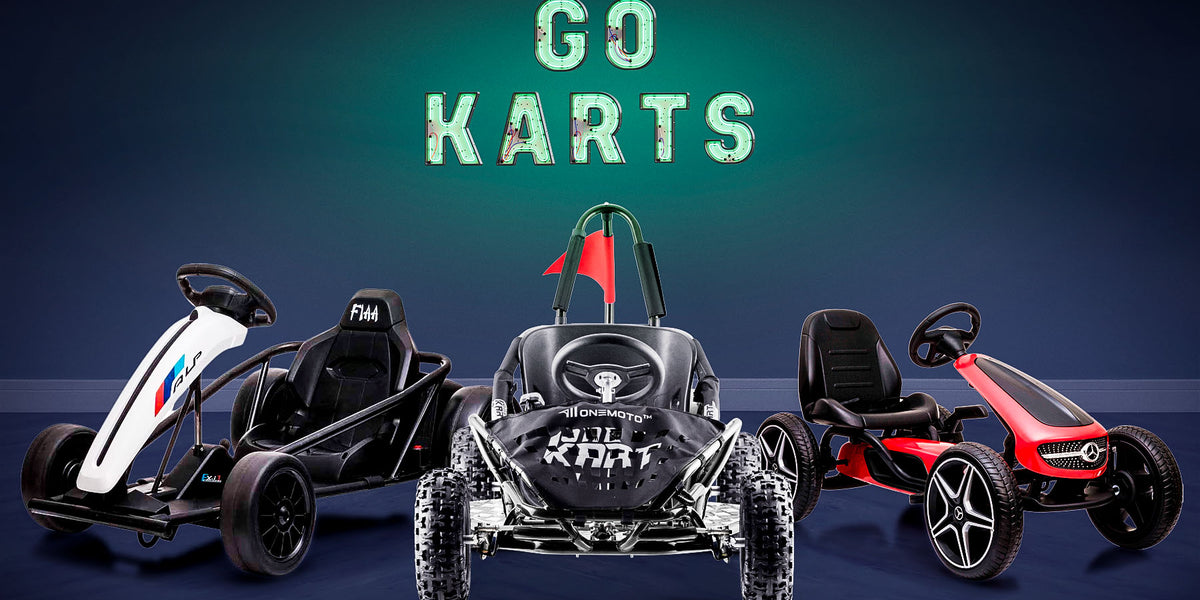


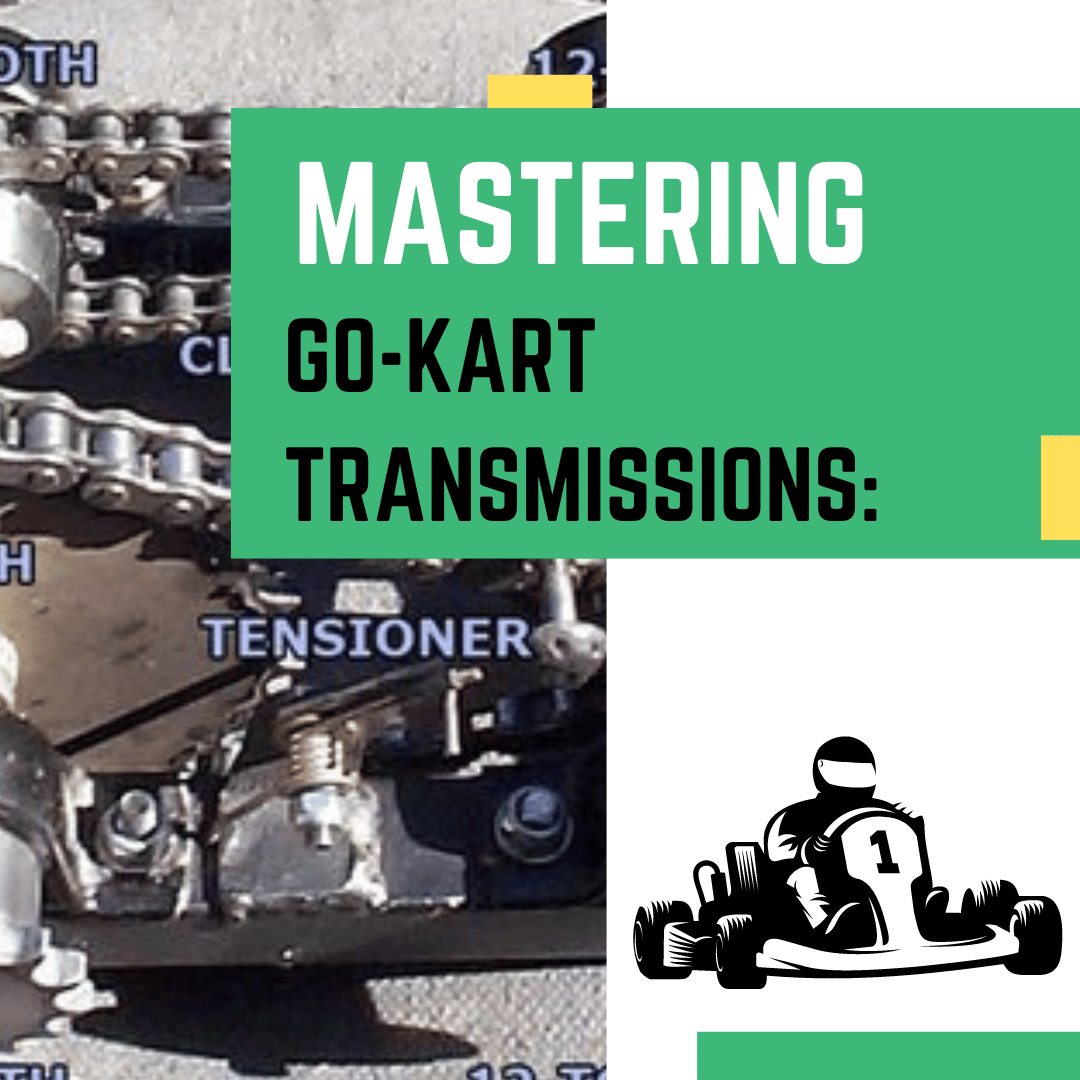
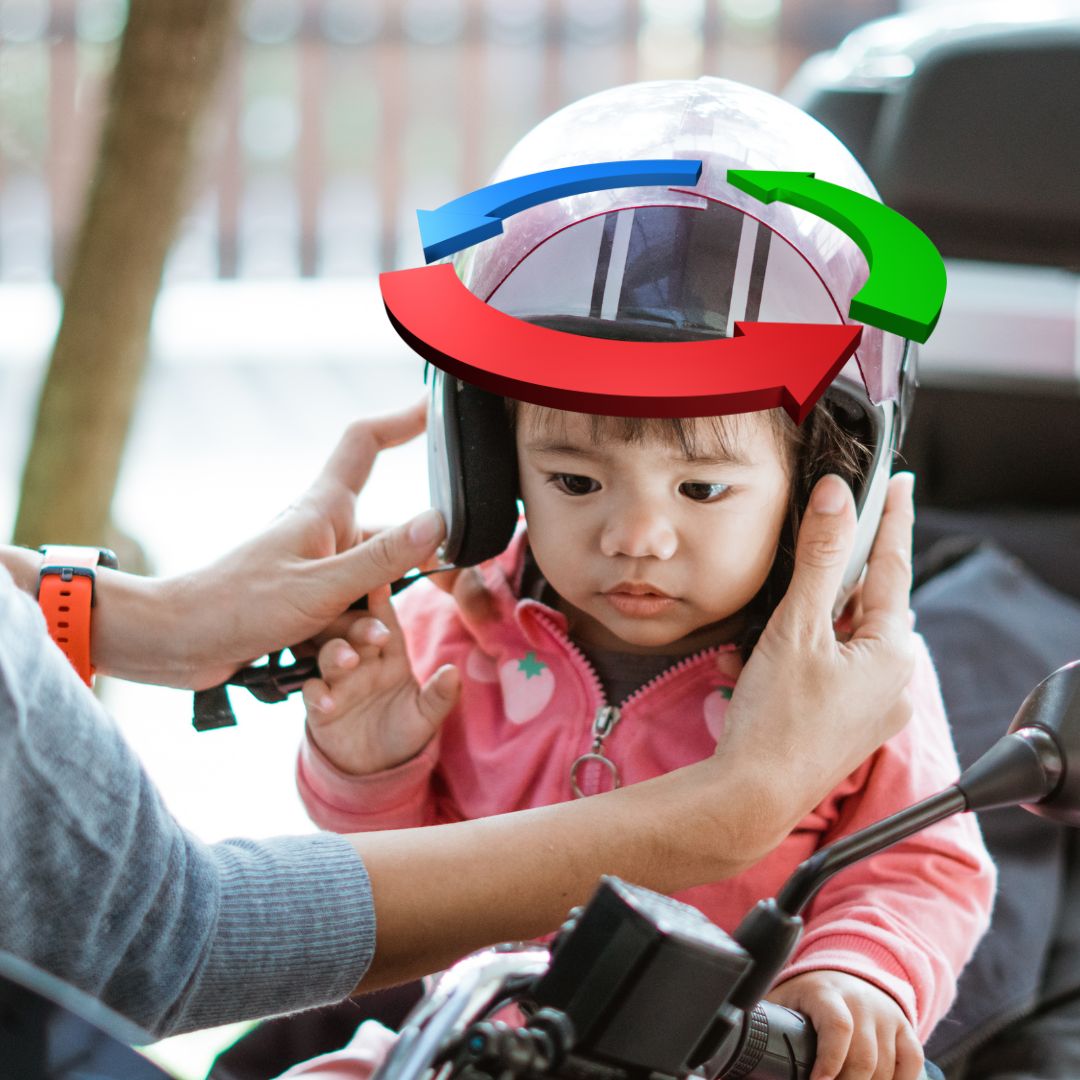

Share:
Go Kart Tyre Durability: How Long Can You Expect Them to Last?
Clothes You Should Wear When Going Go Karting